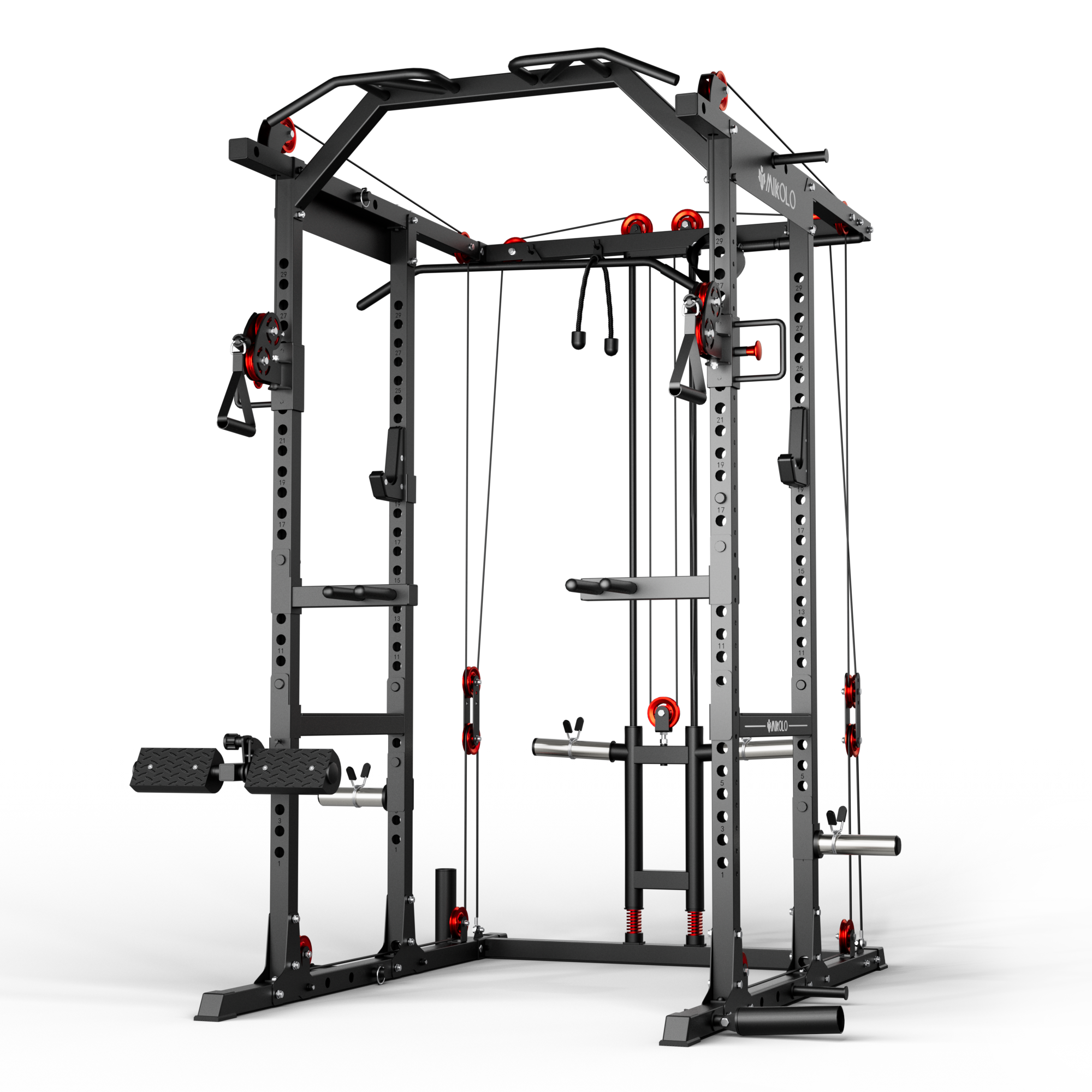If you're looking to develop a broader, more defined back, the lat pulldown is a must-have in your training routine. While the classic wide-grip version is a staple, relying solely on one style can limit both muscle activation and long-term progress. Incorporating multiple lat pulldown variations helps target different areas of the back, improve grip strength, and keep your workouts engaging.
Below, we’ll break down the most effective lat pulldown types, including grip, bar, and machine variations—plus how each one challenges your muscles differently.
Why Switch Up Your Lat Pulldown?
Your latissimus dorsi (lats) are massive muscles that span most of your upper back. They’re responsible for shoulder extension, adduction, and internal rotation. But depending on your grip, angle, and attachment, you can shift the emphasis to hit different fibers of the lats, rhomboids, traps, and even biceps. Varying your pulldown routine ensures better muscle symmetry, improved strength carryover, and reduced risk of plateauing.
1. Wide-Grip Lat Pulldown (Classic)
This is the most recognized variation. With a grip wider than shoulder-width, you emphasize the upper outer lats, which helps build that coveted “V” taper. Avoid leaning too far back and focus on pulling the bar to your upper chest with controlled movement.
2. Close-Grip Lat Pulldown
Using a V-bar or narrow neutral grip, this version shifts more of the load to the lower lats and inner back. It also allows for a longer range of motion and often results in a better stretch at the top.
3. Reverse-Grip (Underhand) Lat Pulldown
By switching to a supinated (underhand) grip, you increase biceps involvement and target the lower lats more intensely. It’s a favorite for those wanting to bring up the lower lat region.
4. Neutral-Grip Pulldown
Using parallel handles or a neutral-grip bar reduces shoulder stress while still targeting the lats effectively. This variation is great for beginners or lifters with shoulder mobility issues.
5. Single-Arm Lat Pulldown
This variation allows for unilateral training, helping correct muscle imbalances between sides. You can use a D-handle and perform this on a standard lat pulldown machine or a functional trainer with adjustable pulleys.
6. Behind-the-Neck Pulldown
Once popular, this version has fallen out of favor due to potential shoulder strain. If you attempt it, use light weight and ensure proper shoulder mobility. It emphasizes the upper lats and traps.
7. Straight-Arm Pulldown
Though technically not a lat pulldown, it’s an essential complementary movement. Standing with a straight bar attached to a high pulley, you pull the bar down in an arc with straight arms. This isolates the lats and teaches proper engagement for compound lifts like pull-ups and rows.
8. Lat Pulldown Machine Variations
Modern gyms often feature adjustable machines that allow you to change the seat angle, grip width, and even isolate each arm. Don’t overlook these—switching up the machine setup can provide fresh stimulus and muscle activation.
9. Kneeling Lat Pulldown (Cable Variation)
Using a dual cable system while kneeling forces more core engagement and allows for independent arm movement. It’s especially effective for improving symmetry and control.
My Personal Experience with Lat Pull Variations
When I first plateaued on my wide-grip pulldowns, I wasn’t sure what was holding me back. My back looked broad from the front, but lacked thickness and definition in the mid and lower regions. It wasn’t until I introduced close-grip and underhand variations that I began to notice balanced development and renewed strength progression. Today, I rotate through at least three different pulldown styles weekly to keep my back training comprehensive and adaptive.
Choosing the Best Lat Pulldown Variation for You
Each variation serves a different purpose:
-
For width: Go with wide-grip or behind-the-neck (if mobility allows).
-
For thickness: Close-grip, reverse-grip, or neutral-grip are your go-to.
-
For isolation or rehab: Single-arm, kneeling, and straight-arm pulldowns shine.
-
For variety and balance: Rotate through multiple grips and attachments regularly.
Final Thoughts
The best results come not from repeating the same movement endlessly, but from smart variation. Whether you’re training for aesthetics, strength, or performance, using different types of lat pulldowns will help you build a more complete, powerful back. Choose the styles that fit your goals—and don’t be afraid to experiment. Your lats will thank you.













































Leave a comment
This site is protected by hCaptcha and the hCaptcha Privacy Policy and Terms of Service apply.